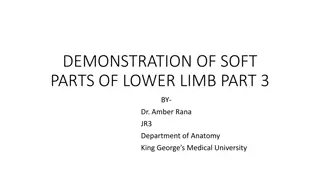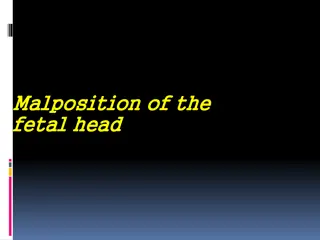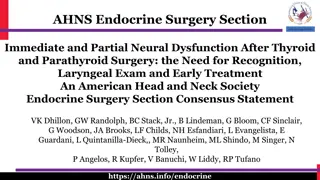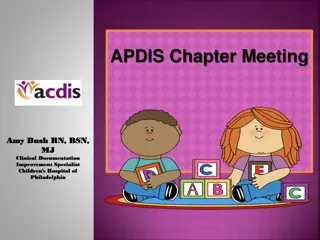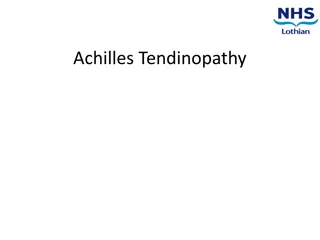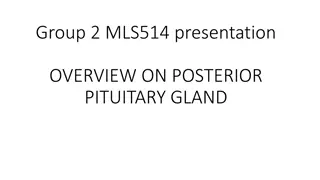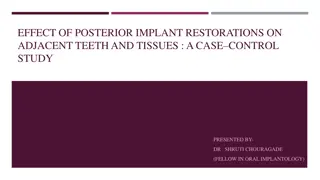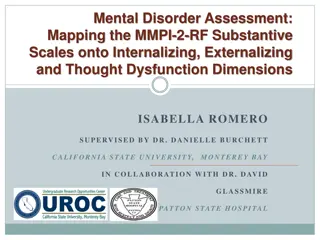Understanding Posterior Tibialis Tendon Dysfunction (PTTD) in Adults
Posterior Tibialis Tendon Dysfunction, also known as Adult Acquired Flat Foot Deformity (PTTD), is a condition that affects the tibialis posterior tendon, leading to reduced arch support. Common causes include obesity, trauma, age, and existing health conditions. Symptoms may include ankle pain, swelling, arch flattening, and difficulty standing on tiptoes. Diagnosis involves a physical examination by a healthcare professional. Management options include lifestyle changes, activity modification, cold compress, rest, self-directed exercises, podiatry, and physiotherapy. Lifestyle and health changes such as maintaining a healthy diet, adequate sleep, reducing alcohol intake, and quitting smoking can also help improve the condition.
Download Presentation

Please find below an Image/Link to download the presentation.
The content on the website is provided AS IS for your information and personal use only. It may not be sold, licensed, or shared on other websites without obtaining consent from the author. Download presentation by click this link. If you encounter any issues during the download, it is possible that the publisher has removed the file from their server.
E N D
Presentation Transcript
Posterior Tibialis Tendon Dysfunction/Adult Acquired Flat Foot Deformity (PTTD)
Contents 1. What is PTTD? 2. What are the causes? 3. What are the symptoms? 4. How is it diagnosed? 5. What is the management? 6. How can I manage it?
What is PTTD? PTTD refers to the impairment of the tibialis posterior tendon resulting in reduced support to the arch. It can also be referred to as adult acquired flat foot deformity.
What are the causes What are the causes? There are several proposed risk factors for PTTD including; -Obesity -Trauma -Age -Existing co morbidities e.g. Diabetes & high blood pressure Most commonly affects females aged 40+ years old
What are the symptoms? Pain around the inside of the ankle. Ankle swelling. Flattening of the arch. Pain increases with weight- bearing activity. Difficulty and pain standing on tip toes.
How is it diagnosed? An appropriate healthcare professional will discuss your symptoms and enquire about your general health. A physical examination of your foot and ankle will be carried out to assess your movement, response to particular tests and level of pain. This conditions is diagnosed by clinical examination.
What is the management? Many patients are happy to self-manage their symptoms, with painkillers/anti-inflammatory medication or other non-invasive treatments such as: Lifestyle and health changes Activity Modification Cold compress Rest and immobilisation, as required Self directed exercises Podiatry and/or Physiotherapy
Lifestyle & Health Changes Maintaining a healthy diet and weight Getting 7-9 hours of quality sleep per night Reducing alcohol intake Quit smoking Not all of these recommendations will be relevant to everyone, but these are important factors to consider to optimise your outcome. Click this link for more information and support options
How can I manage it? Application of ice to control the pain/discomfort. Self directed exercises. Rest/immobilisation/activity modification, as required. Simple pain relief or anti- inflammatory medication - Consult your GP or Pharmacist Well fitted and supportive footwear Image result for pain relief
Physiotherapy Physiotherapy/Podiatry Through a thorough examination, a Podiatrist or Physiotherapist can: Help you establish what may be causing your pain Provide you with an individualised treatment plan to help and/or resolve symptoms. Advise or arrange appropriate orthoses/insoles Advise and arrange further investigation, if required
More Invasive Management Options In some cases symptoms may persist and more invasive treatments may be required/requested by you, as the patient: Surgery
Surgery Surgery is only required if pain is present and symptoms are unable to be controlled by more conservative methods, as described above. This is rarely carried out for this condition.


